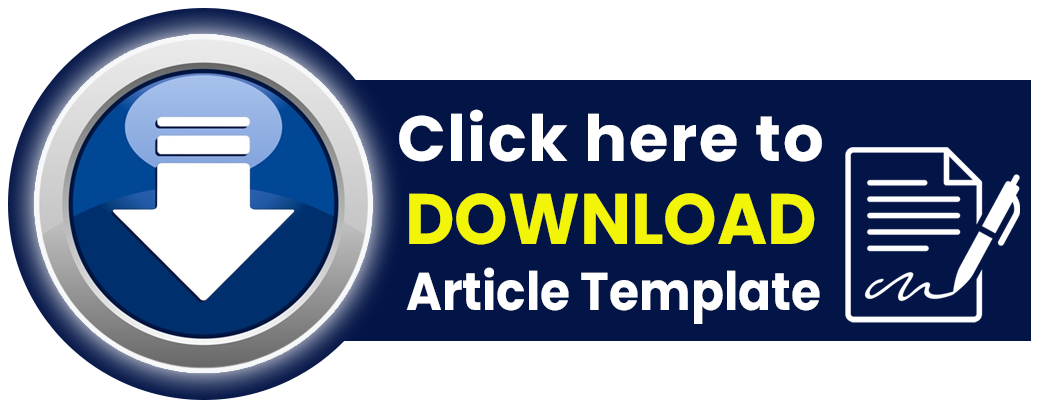Digital Watermarking Implementation Of Digital Watermarking On Images Using The Least Significant Bit Method
Abstract
The ease of accessing the internet in this modern era has led to illegal crimes, especially data copying, data distribution and abuse of intellectual property rights. From these problems emerged a method of securing data and information, namely watermark. Watermark is used for data security techniques, both for copyright protection and digital signatures in the visible and invisible realms. One of the data security techniques used here is to use the least significant bit (LSB) method. This method is used for data security or images that contain watermarks, for example on currency there is usually a logo to distinguish real and fake currencies. This study uses nine host images taken from the https://www.kaggle.com/datasets/felicepollano/watermarked-not-watermarked-images dataset with different sizes, namely 513 x 513 pixels, 488 x 350 pixels, 467 x 350 pixels, 500 x 333 pixels, 512 x 301 pixels, 490 x 350 pixels, 500 x 332 pixels, 400 x 266 pixels, and 500 x 308 pixels. As for the label image, it uses the uty logo which has a size of 50 x 50 pixels, 80 x 80 pixels, and 124 x 124 pixels. From the results of the watermark test that has been carried out using the LSB method, the average PNSR value is 65 dB, so it can be concluded that the watermark research using the LSB method gets pretty good image results and can be used for data security.
Keywords: Watermark, Least Significant Bit, Peak Signal to Noise Ratio (PNSR)
References
M. F. Nur Lukman, Jumadi Jumadi, N. D. Aminuddin, Dian Sa’adillah Maylawati, and M. A. R. Arianti, “"Discrete Cosine Transform Method for Watermarking in Digital Image Processing,” IEEE 7th Int. Conf. Comput. Eng. Des., 2021.
Hasiholan Manurung, “Teknik Penyembunyian Pesan Teks Pada Media Citra Gif Dengan Metode Least Significant Bit ( Lsb ),” Pelita Inform. Budi Darma, 2014.
B. T. Agung Mulyo Widodo, “Implementation of Image Fusion Method for Watermark on Color Image Using Wavelet Transformation Domain,” 2017.
D. C. I. Shella Rasita Febriani, “Implementasi Digital Watermaking Pada Citra Menggunakan Metode Least Signifikan Bit,” J. Inform. dan Komput., 2016.
R. R. Nurmaliana Pohan, Rusmin Saragih, “Invisible Watermarking Audio Digital with Discrete Cosine Transform,” IJSRST, 2017.
N. O. D. W. Sutoyo T, Mulyanto E, Suhartono V, Teori Pengolahan Citra Digital. Yogyakarta: Andi Offset, 2009.
Gani Stephanie, Budi Setiyono, “Teknik Invisible Watermarking Digital Menggunakan Metode DWT (Discrete Wavelet Tarnsform),” J. Sains dan Seni ITS, 2019.
Y. S. Siregar, M. Khairani, H. Harahap, and Y. F. A. Lubis, “The Implementation Of Discrete Cosine Transform (DCT) And Blowfish Methods In Digital Video Security,” Sinkron, 2022.
B. W. A. Putro and Febriani, “Aplikasi Watermarking Dengan Metode Least Significant Bit Menggunakan Matlab,” J. Ilm. Inform. Komput., 2017.
F. I. Ikromina and E. I. H. Ujianto, “Invisible Watermarking Citra Digital Menggunakan Kombinasi Metode Discrete Cosine Transform Dan Discrete Wavelet Transform,” JANAPATI, 2019.
R. Agustina and R. A. Asmara, “Penyisipan Watermark Menggunakan Metode Discrete Cosine Transform Pada Citra Digital,” J. Inform. Polinema, vol. 2, no. 1, p. 29, 2017, doi: 10.33795/jip.v2i1.51.
I Dewa Made Bayu Atmaja Darmawan, “Analisis Dan Perbandingan Teknik Watermarking Citra Digital,” J. Ilmu Komput., 2014.
M. I. Alvin, Arya Wicaksana and Prasetiyowati., “Digital Watermarking for Color Image Using DHWT and LSB,” 2019 5th Int. Conf. New Media Stud., 2019.
Copyright (c) 2023 intan setiawati

This work is licensed under a Creative Commons Attribution-NonCommercial-NoDerivatives 4.0 International License.
Copyright Notice
The Authors submitting a manuscript do so on the understanding that if accepted for publication, copyright of the article shall be assigned to journal IJETS, University Of Technology Yogyakarta as publisher of the journal, and the author also holds the copyright without restriction.
Copyright encompasses exclusive rights to reproduce and deliver the article in all form and media, including reprints, photographs, microfilms and any other similar reproductions, as well as translations. The reproduction of any part of this journal, its storage in databases and its transmission by any form or media, such as electronic, electrostatic and mechanical copies, photocopies, recordings, magnetic media, etc. , are allowed with a written permission from journal IJETS, University Of Technology Yogyakarta.
Jurnal IJETS Board, University Of Technology Yogyakarta, the Editors and the Advisory International Editorial Board make every effort to ensure that no wrong or misleading data, opinions or statements be published in the journal. In any way, the contents of the articles and advertisements published in the journal IJETS, University Of Technology Yogyakarta are sole and exclusive responsibility of their respective authors and advertisers.













 This work is licensed under a Creative Commons Attribution-ShareAlike 4.0
This work is licensed under a Creative Commons Attribution-ShareAlike 4.0